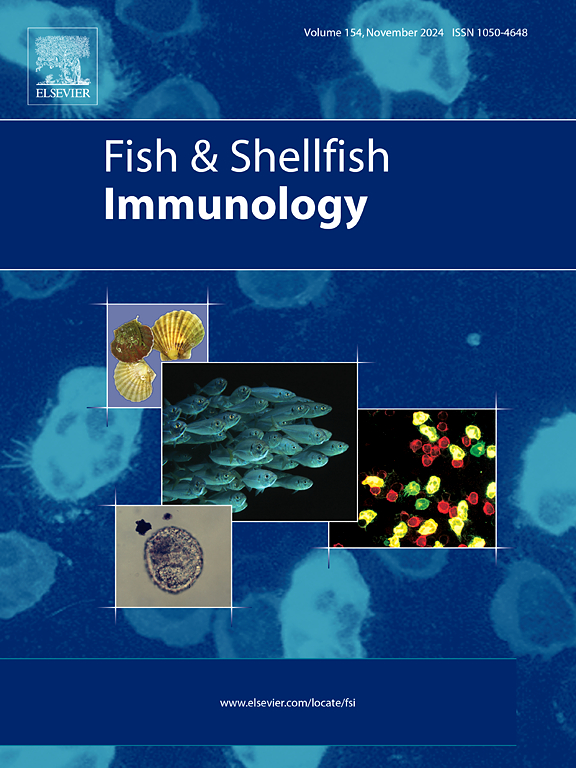Characterization of a heat shock factor 1 (HSF1) gene and the association of its single nucleotide polymorphisms with susceptibility/resistance of Magallana gigas to Halomonas sp. 7T
IF 4.1
2区 农林科学
Q1 FISHERIES
引用次数: 0
Abstract
Heat shock transcription factor 1 (HSF1) is an important activator of innate immunity in the response of invertebrates to pathogen invasion. In the present study, a HSF1 was characterized in Pacific oyster Magallana gigas (MgHSF1), and its association of single nucleotide polymorphisms with susceptibility/resistance of oyster to Halomonas sp. 7T were investigated. MgHSF1 shared highly conserved DNA binding and acetylation sites with other organisms. The MgHSF1 mRNA showed high expression in haemocytes, and was significantly induced by lipopolysaccharide stimulation. The single nucleotide polymorphisms (SNPs) within promoter region of MgHSF1 gene from two oyster populations (the bacterial-resistant population and the common population) were investigated to analyze their association with bacterial resistance. Nine out of 14 SNPs including −543 A/G, −494 C/T, −488 T/A, −476 G/A, −336 C/T, −335 T/C, −334 C/T, −307 T/C and −268 T/C were found to be associated with bacterial resistance. Moreover, haplotypes TCTCGA was associated with bacterial resistance. The results threw lights on the molecular mechanisms of different oyster populations' resistance to bacterial diseases which suggested that the increased bacterial resistance of bacterial-resistant population was associated with the higher expression of MgHSF1. Meanwhile, the nine genotypes (−543 G/G, −494 T/T, −488 A/A, −476 A/A, −336 T/T, −335 C/C, −334 T/T, −307 T/T, and −268 C/C) and one haplotype (TCTCGA) could be used as potential markers for oyster selection breeding with higher bacterial resistance.
求助全文
约1分钟内获得全文
求助全文
来源期刊

Fish & shellfish immunology
农林科学-海洋与淡水生物学
CiteScore
7.50
自引率
19.10%
发文量
750
审稿时长
68 days
期刊介绍:
Fish and Shellfish Immunology rapidly publishes high-quality, peer-refereed contributions in the expanding fields of fish and shellfish immunology. It presents studies on the basic mechanisms of both the specific and non-specific defense systems, the cells, tissues, and humoral factors involved, their dependence on environmental and intrinsic factors, response to pathogens, response to vaccination, and applied studies on the development of specific vaccines for use in the aquaculture industry.
 求助内容:
求助内容: 应助结果提醒方式:
应助结果提醒方式:


